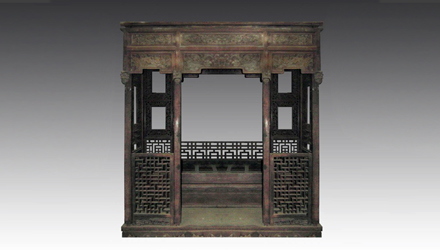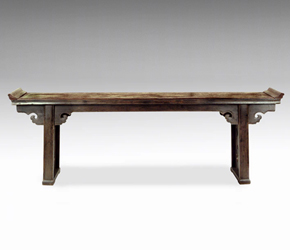Classical Antique Chinese Furniture
 |
|
collection of Chinese Classical furniture |
"Classical antique Chinese furniture is distinguished by beautiful shapes and simple, subtly decorated moldings. Designs can sometimes be so simple they might appear stark and plain. Artisans recreated traditional motifs to update designs; however, generally speaking, once a design entered the lexicon of furniture makers it traveled from one generation to the next with very little change"
It can be argued the history of classical antique Chinese furniture can actually be found in the records provided by excavated objects. Engraved stone and stamped bricks illustrate a culture where people sat on the floor. This has been termed a “mat level furniture culture,” meaning the ancient Chinese knelt or sat cross-legged upon woven mats surrounded by various furnishings including low tables, screens, and armrests. This furniture illustrates an aesthetic of minimalism and simplicity, although some examples were also decorated with unique, fine relief and openwork carving.
 |
|
It wasn’t until the Song Dynasty (960-1280 AD) that many basic furniture styles began to evolve. By the Yuan and Ming Dynasties (1280-1368 and 1368-1644 AD, respectively), these styles matured into fully formed, accepted, repeatable designs, many finished with lacquer and detailed with painted decoration and some featuring only the beauty of the wood itself. In 1567 a ban on imported hardwoods was lifted, and this gave rise to the abundant production of Chinese furniture now commonly thought of as classical in nature. The sudden availability of hardwood also initiated advancements in joinery techniques that, in turn, allowed for the creation of new elegant forms unattainable in softer woods.
Classical antique Chinese furniture is distinguished by beautiful shapes and simple, subtly decorated moldings. Designs can sometimes be so simple they might appear stark and plain. Artisans recreated traditional motifs to update designs; however, generally speaking, once a design entered the lexicon of furniture makers it traveled from one generation to the next with very little change. Chinese classical design was uncomplicated, reduced to flowing smooth lines and simple, extremely well constructed joinery. It has been said, this furniture is like minimalist prose, conveying the richest meaning with the least clutter, and utilizing decorative patterns to achieve more with less.
Classical antique Chinese furniture emphasized the natural beauty of expensive hardwoods, which were often waxed to give a glossy, resistant surface as opposed to lacquering and painting, which was usually reserved for softer woods. Woods such as Rosewood, Zitan, Zelkova, and Hunghuali were highly prized. This furniture often reflected the restrained, elegant tastes of the scholar official's class, but ultimately, it also appealed to the rising nouveau-riche merchant class. It was placed primarily in homes where individual pieces served distinct functions and purposes, among them illustrating the importance and status of any particular household. The placement of individual pieces was also important, showing that the presentation of the furniture meant far more than the Chinese word for furniture jiaj, or implements of the house, implies. Even in old China, this furniture was collectible and demonstrative that the owner had achieved an enviable status.
Cabinetmakers creating classical antique Chinese furniture inherited extremely high standards of workmanship from previous generations of woodworkers. Many of the designs they created have endured to the present day, so it can be said classical antique Chinese furniture is not necessarily antique, but instead, composed of styles, materials and forms honed by years of refinement, study, and practice. The best craftsmen have always understood how to combine exquisite forms, high grade materials, and bold artistry to create an enduring repertoire that has come to be known as classical antique Chinese furniture.

|
|
Download this Article: Chinese Classical Furniture.pdf

